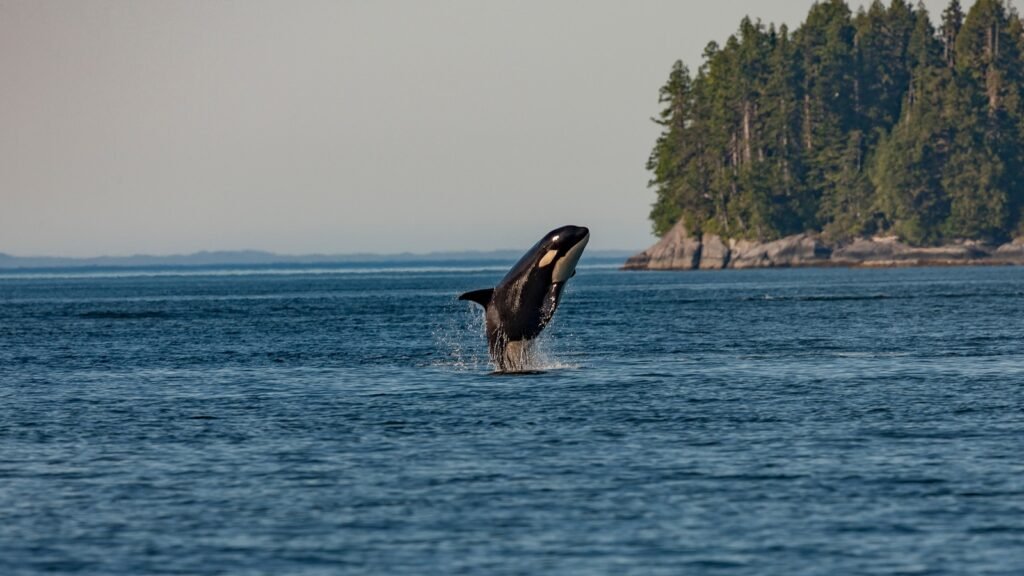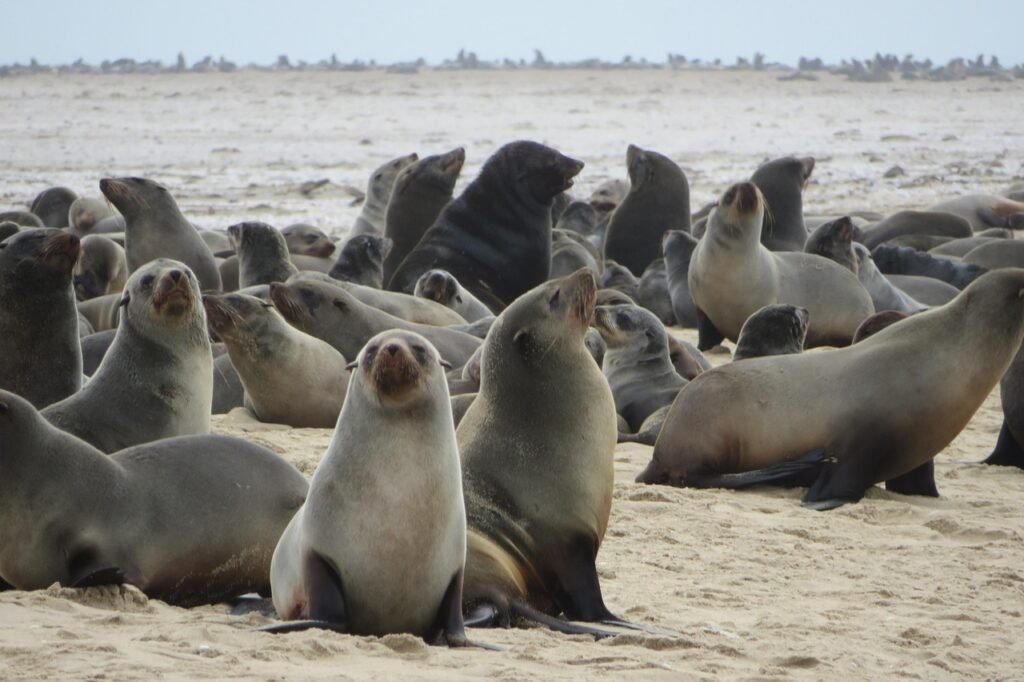On a windless morning in Seattle’s Elliott Bay this spring, a pod of Bigg’s killer whales sliced through green water and did something few onlookers had ever seen: they pursued and caught a seabird at the edge of an urban shoreline. The scene played out below ferry docks and cranes, a reminder that apex predators are learning to hunt in our noisy backyard. Across Washington waters, marine experts say behavior is shifting, sometimes subtly, sometimes in show-stopping ways. New footage from drones, new protections on the water, and unusual encounters near marinas are revealing a sharper, more adaptable predator – and a scientific mystery in motion.
The Hidden Clues

What do we make of a marine-mammal specialist that suddenly targets a grebe in a city bay, then vanishes into ferry wakes as if it were just another Tuesday? That rare bird hunt, filmed in March near West Seattle, jolted even seasoned watchers because Bigg’s orcas typically focus on seals and sea lions, not diving birds. The moment underscored a broader pattern scientists are tracking: nearshore hunts that exploit man‑made edges, shifting prey schools, and fleeting opportunities in shallow water.
It’s not a wholesale menu change so much as a willingness to improvise in a complex urban sea, where the shortest path to dinner might run past a marina ladder or a seawall. I’ve stood on those same lookouts with a pocket hydrophone, listening to the low industrial hum; the idea that whales are threading hunts through that soundscape is both thrilling and a little unsettling. For researchers, these isolated scenes are the breadcrumbs that point to larger, evolving strategies.
A Tale of Two Orcas

Washington’s waters host two communities with radically different playbooks: Southern Residents that chase salmon and Bigg’s orcas that stalk marine mammals. Southern Residents are in trouble, hunting harder for fewer fish and straining against vessel noise that masks the clicks and buzzes they use to find Chinook. Bigg’s orcas, by contrast, have been booming in the Salish Sea as seal and sea lion numbers rose, and they’re increasingly seen executing close‑to‑shore ambushes near cities where prey clusters. These divergent fortunes color what “new technique” looks like: for Residents it might be quieter, longer foraging bouts that still come up short; for Bigg’s it can be opportunistic, even experimental strikes in unfamiliar settings.
Rules now require all vessels to keep a half‑mile from Southern Residents in Washington waters, a clear attempt to give struggling fish‑eaters breathing room to hunt. The same rules don’t apply to Bigg’s, highlighting the region’s two-track reality and why experts watch each group through a different lens.
Close‑to‑Shore Tactics in an Urban Sea

Across Puget Sound, marinas and seawalls create corners where panicked prey can be pinned, and observers have watched orcas thread between piers in pursuit. In 2025, crowding sea lions turned Seattle’s Shilshole Marina into a pinniped city; where pinnipeds rest, predators follow, and the nightly chorus sometimes includes distant orca calls. In nearby British Columbia, a pod moved among docked boats at Horseshoe Bay, likely scanning for seals in the maze of hulls and pilings.
These aren’t stunts; they are edge hunts – fast, shallow, and often silent until a tail-slap or lunge detonates the surface. The same spring, that grebe hunt off West Seattle hinted at another edge case: birds corralling baitfish tight to structures, and whales testing a split‑second opportunity. Urban shorelines, in short, are becoming classrooms for improvisation.
From Ancient Tools to Modern Science

This year, researchers documented Southern Resident killer whales modifying bull kelp and rolling it between their bodies – a first for tool manufacture in a marine mammal and a striking clue to cultural flexibility. Tool use isn’t hunting, but it shouts something important: if whales can invent and share a grooming tool, they likely possess the cognitive scaffolding to innovate foraging tactics, too. Drones made that discovery possible, just as drones and tags now decode fine‑scale hunting sequences without stressing the whales.
In Washington, teams also pair drones with scent‑detection dogs that locate floating feces, offering a biochemical map of stress, diet, and disease that complements what cameras and acoustics reveal. Each method fills blind spots and accelerates how fast scientists can say not just what whales did, but why they might be doing it. Cultural animals plus better eyes in the sky is a potent recipe for catching behavior mid‑evolution.
The Hidden Clues, Quantified

Behind the headline moments are sobering data points that anchor the story. Consider these:
- As of January 1, 2025, Washington requires all vessels to stay roughly a half‑mile from Southern Residents, a response to chronic disturbance during hunts.
- Drone assessments found about two dozen Southern Residents in poor body condition in 2024, suggesting prolonged nutritional stress.
- Bigg’s orcas executed a rarely seen bird hunt in Elliott Bay in March 2025, highlighting adaptable prey choices near dense human infrastructure.
- Sea lions packed Seattle’s Shilshole Marina in May 2025, drawn by strong herring runs and creating prey hot spots at the human‑wildlife interface.
None of this proves a single, sweeping new tactic; together, though, it sketches a clear picture of innovation under pressure, with the urban ocean acting as both obstacle and opportunity.
Why It Matters

When whales tweak how and where they hunt, it ripples through law, science, and everyday life on the water. Traditional models assumed predictable foraging grounds and consistent behaviors; today’s urban and climate‑bent seascape undermines those assumptions, from salmon scarcity to noise‑cluttered soundscapes that muffle echolocation. That’s why Washington’s distance rule isn’t just a feel‑good buffer – it’s an evidence‑based attempt to restore the acoustic space whales need to find food at all stages of a hunt.
It also explains the urgency around new monitoring: without drones and hydrophones, we’d miss early signals that behaviors are changing and management is lagging behind. As a field reporter, I’ve learned that the most useful stories aren’t the splashy breaches; they’re the patterns – longer gaps between successful fish chases, tighter nearshore turns, a sudden pivot toward birds – that tell us where the ecosystem is drifting. Getting that story right can mean the difference between reactive protection and proactive recovery.
Global Perspectives

Elsewhere, orcas have perfected wave‑washing, a high‑coordination tactic that flips seals from ice into open water; it’s a vivid reminder that these animals are world‑class problem‑solvers. Those Antarctic hunts are not Washington’s playbook, but they prove how fast culture can codify a tactic and spread it within a pod. In that light, a one‑off urban bird hunt or a new way to corner sea lions around a jetty may be step one of a local tradition that sticks. Culture cuts both ways: lose a population, and you lose its hard‑won strategies; protect it, and you safeguard that behavioral library for whatever the future throws at them.
Washington’s orcas won’t suddenly become polar wave‑washers, but the same intelligence that makes those Antarctic hunts possible is at work right here in the Salish Sea. That’s why scientists compare regions – not to conflate them, but to understand the range of what orcas can do.
The Future Landscape

What comes next looks like science fiction with salty boots: AI‑assisted drones reconstructing hunts frame by frame, passive acoustic networks mapping whale “quiet zones” in real time, and ship‑slowdown programs that cut underwater noise when whales are present. Washington’s Quiet Sound initiative is a taste of that future, marrying alerts with voluntary speed reductions across busy shipping corridors. On the research side, better tagging and computer vision are turning messy field footage into analyzable timelines that reveal how long a chase runs, when whales switch from search to sprint, and how often they succeed.
Combined with community reports and marina camera traps, scientists can now spot micro‑innovations – like a new flanking pattern around a dock – before they become widespread. The goal isn’t just to describe behavior but to shorten the policy loop so protections keep pace with whales’ learning curves. That pace is only quickening.
What You Can Do Now

If you boat, paddle, or sail in Washington, treat every orca like a Southern Resident and give it the half‑mile buffer; if one surfaces inside that, slow to seven knots and ease away. From shore, watch instead of chase, and report sightings through local networks that help mariners and scientists steer clear or study smarter. Support salmon recovery and kelp restoration efforts – more fish and healthier nearshore habitat translate into better odds for Resident whales and more balanced predator‑prey dynamics for everyone. If you’re a city dweller, push for quieter working waterfronts and stormwater fixes; cleaner, calmer water is a practical win for hunting whales.
And if you’re just curious, follow reputable research groups, not viral clips, so your awe translates into informed action; that’s how quick moments on a pier become long‑term protection in the places we share with whales. What will you notice the next time the water goes still?

Suhail Ahmed is a passionate digital professional and nature enthusiast with over 8 years of experience in content strategy, SEO, web development, and digital operations. Alongside his freelance journey, Suhail actively contributes to nature and wildlife platforms like Discover Wildlife, where he channels his curiosity for the planet into engaging, educational storytelling.
With a strong background in managing digital ecosystems — from ecommerce stores and WordPress websites to social media and automation — Suhail merges technical precision with creative insight. His content reflects a rare balance: SEO-friendly yet deeply human, data-informed yet emotionally resonant.
Driven by a love for discovery and storytelling, Suhail believes in using digital platforms to amplify causes that matter — especially those protecting Earth’s biodiversity and inspiring sustainable living. Whether he’s managing online projects or crafting wildlife content, his goal remains the same: to inform, inspire, and leave a positive digital footprint.




